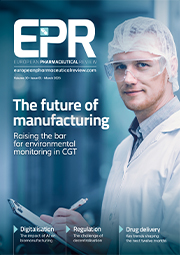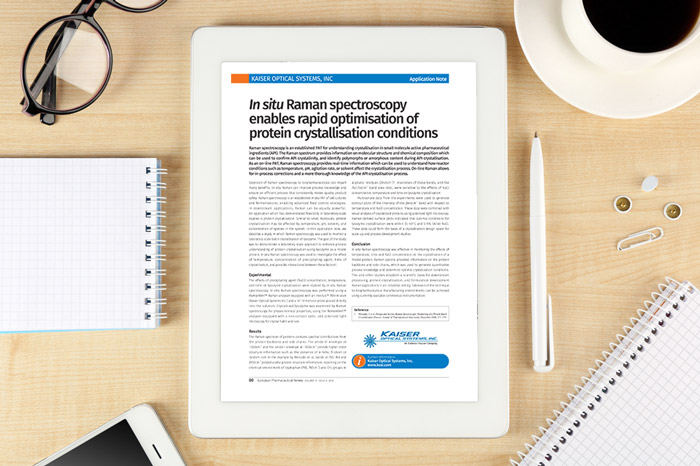Application note: In situ Raman spectroscopy enables rapid optimisation of protein crystallisation conditions
Posted: 20 December 2016 | Kaiser Optical Systems | No comments yet
This application note explains how in situ Raman can improve process knowledge and ensure an efficient process that consistently makes quality product safely…
Raman spectroscopy is an established PAT for understanding crystallisation in small molecule active pharmaceutical ingredients (API). The Raman spectrum provides information on molecular structure and chemical composition which can be used to confirm API crystallinity, and identify polymorphs or amorphous content during API crystallisation. As an on-line PAT, Raman spectroscopy provides real-time information which can be used to understand how reactor conditions such as temperature, pH, agitation rate, or solvent affect the crystallisation process. On-line Raman allows for in-process corrections and a more thorough knowledge of the API crystallisation process.
Extension of Raman spectroscopy to biopharmaceuticals can impart many benefits. In situ Raman can improve process knowledge and ensure an efficient process that consistently makes quality product safely. Raman spectroscopy is an established in situ PAT of cell cultures and fermentations, enabling advanced feed control strategies. In downstream applications, Raman can be equally powerful. An application which has demonstrated feasibility in laboratory-scale studies is protein crystallisation. Similar to small molecules, protein crystallisation may be affected by temperature, pH, solvent, and concentration of species in the system. In this application note, we describe a study in which Raman spectroscopy was used to monitor a laboratory scale batch crystallisation of lysozyme. The goal of the study was to demonstrate a laboratory scale approach to enhance process understanding of protein crystallisation using lysozyme as a model protein. In situ Raman spectroscopy was used to investigate the effect of temperature, concentration of precipitating agent, time of crystallisation, and possible interactions between these factors.
This application note is restricted - login or subscribe free to access


Why subscribe? Join our growing community of thousands of industry professionals and gain access to:
- bi-monthly issues in print and/or digital format
- case studies, whitepapers, webinars and industry-leading content
- breaking news and features
- our extensive online archive of thousands of articles and years of past issues
- ...And it's all free!
Click here to Subscribe today Login here
Related content from this organisation
- Expert View: Beyond API monitoring: in‑line Raman spectroscopy for bioprocess monitoring and control
- Application Note: Representative sampling of solids and turbid media in process raman spectroscopy
- Scientific Poster & Whitepaper Gallery 2018
- Scientific Poster: Raman spectroscopy technologies enabling scalable process control in bioprocessing
- Kaiser Optical Systems, Inc. receives 2017 Aspen Award for the advancement of upstream bioprocessing








